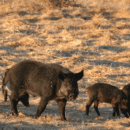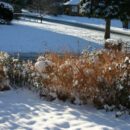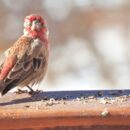The woolly bear is a common and well-known caterpillar. Though most people have one kind of woolly bear in mind, there are 8 or more species in the U.S. that could legitimately be called woolly bears because of the dense, bristly hair that covers … [Read more...]
‘The pig bomb’: Feral hogs make a great meme, but they are a serious pest in Virginia
In many parts of the country, including Virginia, feral hogs have posed a huge threat to natural habitats and endangered plants and animals, according to DGIF. They multiply fast, have few or no natural predators aside from humans and, once … [Read more...]
Fall Garden Care for Pollinators
This article discusses the beneficial pollinators that overwinter in the garden and best practices for providing habitat for them. CONTINUE SOURCE: https://extension.psu.edu/fall-garden-care-for-pollinators … [Read more...]
Fall armyworm outbreak in Virginia – Turf, sod, small grains, late sweet corn, sorghum, and other crops at risk.
Recently, some VCE agents as well as golf course superintendents in the northcentral and southwestern counties of Virginia have reported fall armyworm outbreaks on lawns and golf courses. This outbreak is earlier than usual and potentially could … [Read more...]
BOBCAT
A southern cousin of the lynx, the bobcat (Lynx rufus rufus) is the only “wildcat” in Virginia. Native to most counties in Virginia, the bobcat is a medium-sized cat characterized by dark spots, tufted ears and a short “bobbed” tail. Its color varies … [Read more...]
Beware of the Stinging Puss Caterpillar, Warns Virginia Tech Insect Expert
While most of the stinging caterpillars have bright contrast in colors, this one doesn’t. Its appearance may be considered misleading, as its earthy shades do not give off the “do not touch” warning colors that you may expect a dangerous caterpillar … [Read more...]
Beneficial Wasps and You
Don’t be scared! Did you know…Wasp pollination and predatory efforts are signs of a healthy ecosystem!?! Read on: … [Read more...]
Saving the monarch butterfly, one milkweed plant at a time
On a hot summer day at Claytor Nature Center, a handful of students are plucking fingernail-sized clippings among rows and rows of milkweed plants. What are they doing? Broadly speaking, they are researching how to save the declining monarch … [Read more...]
Wild Bird Diseases: What You Need to Know
Seeing sick birds at your feeder can be a concern. Learn about the most common wild bird diseases and a new mystery bird disease, and how you can help. MORE SOURCE: … [Read more...]
Squash bugs in home gardens
Squash bugs can live through the winter as adults in sheltered places, such as under plant debris, around buildings, or under rocks. When adults come out in the spring, they fly to growing cucurbit plants to feed and mate. Read on: … [Read more...]









